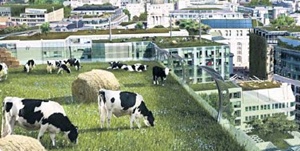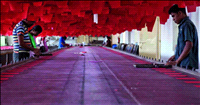UK to have floating cities, 3D printed houses, high-rise farms in next 100 years: poll
26 May 2015
Questions about what the future held for the human race have exercised the minds of philosophers, seers, and others since ages, but engineers, scientists and futurologists have brought a new dimension to such crystal ball gazing with an impressive range of equipment, modeling and such stuff at their command.

So what exactly does the future hold for humankind, given the exploding population expected to reach 11 billion over the next 100 years.
With living space is expected to shrink drastically, what would be the future of the 'built environment' is the question uppermost in the minds of lay people.
Asked to rate a list of 10 options by experts, two-fifths of people polled favoured building downwards while a third voted for structures in the sea.
Preconstruct Floating cities took the second spot in the likely architectural development in the next 100 years, research conducted to mark the launch of a new series of Impossible Engineering on TV channel, Yesterday revealed.
According to the poll, underground and floating cities were seen as the best solutions as humanity faced a living space crisis by 2115.
One in 10 of the 2,000 polled told the TV channel they expected people to be living on Mars.
The human race would be forced to turn to the oceans and build below underground to create more living space.
The study found that four in 10 UK citizens believed the underground route to create more rooms on several levels beneath the earth's surface was the ideal solution to cramped conditions overground.
The next century would see the architectural landscape change beyond all recognition, a panel of experts including the Royal Academy of Engineering said, as technology allowed humans to build astonishing new structures on, and away from the earth.
Spaceports with easy access to the Moon and Mars will become a reality as also buildings that had been 3D printed.
Buildings would come with their own micro-climates, according to Dr Rhys Morgan, director of Engineering and Education at the Royal Academy of Engineering, lecturers at the University of Westminster and urban planners.
According to the panel, buildings would also rise to new heights not seen earlier, as engineers discovered new ways to build skywards.
The difficulty of shrinking urban space, would be solved by building undersea, and huge bridges would span across entire cities to allow cars and trains to bypass traffic congestion.
At the top of the likely developments was super deep basements which would include gardens, swimming pools, and gyms.




























